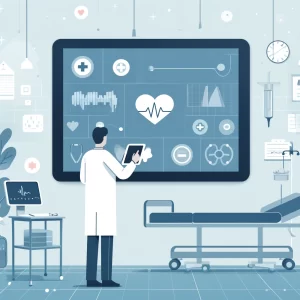The 5 Best-Kept Secrets to Enhancing Your Efficiency in Physician Documentation Using Ambient AI
Attending the “AI: Trust in Action” event hosted by the Chicago Chamber of Commerce was an enlightening experience, particularly when a healthcare CIO shared insights on how ambient AI is revolutionizing physician documentation in hospitals. Here are five best-kept secrets to enhance your efficiency in this critical area:
1. Ambient AI for Real-Time Documentation:
Ambient AI systems can automatically capture and document patient data in real-time, reducing the need for manual entry by physicians. This technology leverages machine learning algorithms to recognize and record vital signs, medical history, and other relevant information without interrupting the clinical workflow.
2. Streamlined Workflow Integration:
Implementing ambient AI in hospitals involves integrating it seamlessly into existing electronic health record (EHR) systems. This ensures that all data is accurately and efficiently recorded, reducing errors and the time spent on documentation. The integration should be designed to minimize disruptions to the clinical workflow, allowing physicians to focus on patient care.
3. Data Accuracy and Validation:
One of the most significant advantages of ambient AI is its ability to improve data accuracy. By automating the documentation process, these systems can reduce human error, which is a common issue in manual documentation. Additionally, AI can validate data in real-time, ensuring that all information is accurate and up-to-date before it is recorded.
4. Enhanced Patient Safety:
Ambient AI can also enhance patient safety by providing real-time alerts and notifications. For instance, if a patient’s vital signs indicate a potential issue, the system can automatically alert healthcare professionals, ensuring prompt intervention and better patient outcomes. This proactive approach to monitoring can significantly reduce adverse events.
5. Scalability and Flexibility:
Implementing ambient AI in hospitals requires a scalable and flexible solution that can adapt to different clinical settings. The system should be able to handle various types of data and integrate with multiple devices, ensuring that it remains effective across different departments and specialties. This flexibility is crucial for widespread adoption and long-term success.
By leveraging these secrets, healthcare organizations can significantly enhance their efficiency in physician documentation, saving a substantial amount of work and improving overall patient care. The integration of ambient AI not only streamlines the documentation process but also enhances data accuracy, patient safety, and the overall clinical workflow.

